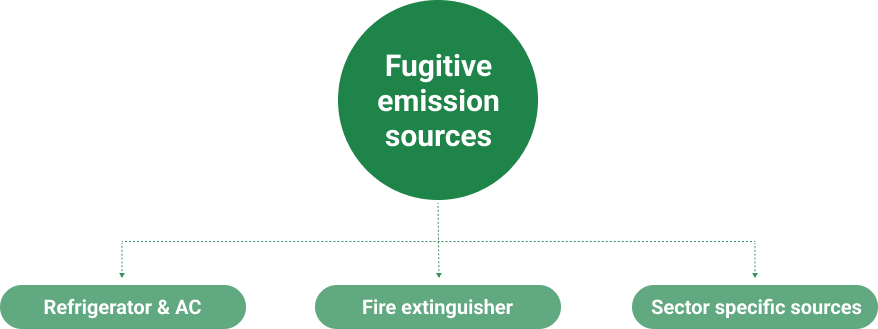Fugitive Emissions
What is Fugitive Emissions?
Fugitive emissions are defined as emissions that are not physically regulated but arise from deliberate or inadvertent discharges into the atmosphere. Accidental releases may be produced by equipment leaks, faulty seals or joints, or intentional venting, flaring, or discharge of GHGs. According to the EPA “A stack, chimney, vent, or other functionally comparable opening could not reasonably contain fugitive emissions”. This document will concentrate on various fugitive emissions sources that are prevalent in various industries and are used by organizations: air conditioning and refrigeration systems, fire suppression systems, and the acquisition and discharge of industrial gasses.
What activities are associated with Fugitive emissions?
- Emissions from gas leaks from applications of refrigeration and air conditioning equipment, including retail food refrigeration, cold storage warehouses, mobile air conditioning, industrial process refrigeration, residential air conditioning, and commercial unitary air conditioning systems.
- Leakages from fixed and portable fire suppression equipment emissions.
- Sector-specific intentional or unintentional GHG gasses released into the atmosphere.
- eg. Leakage of gasses from the joints or valves when supplying the gas from one location to another location

What activities are associated with Fugitive emissions?
The complicated element of the process is fugitive emission calculations since the activity data used to estimate GHG emissions is complex. Various approaches exist for calculating fugutive emission based on activity data type and data acquisition.
- Screening Method
- Material Balance Method
- Simplified Material Balance Method
